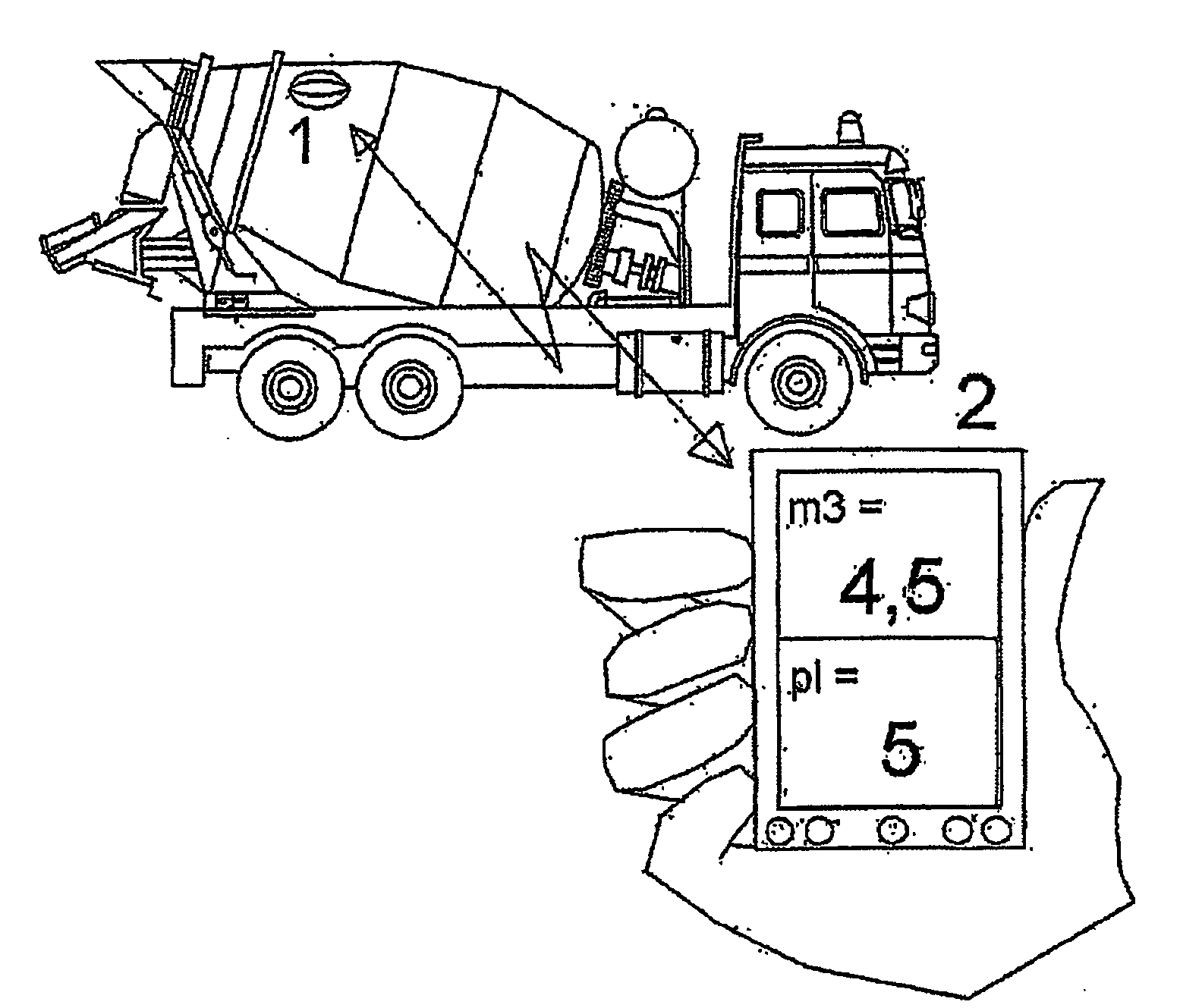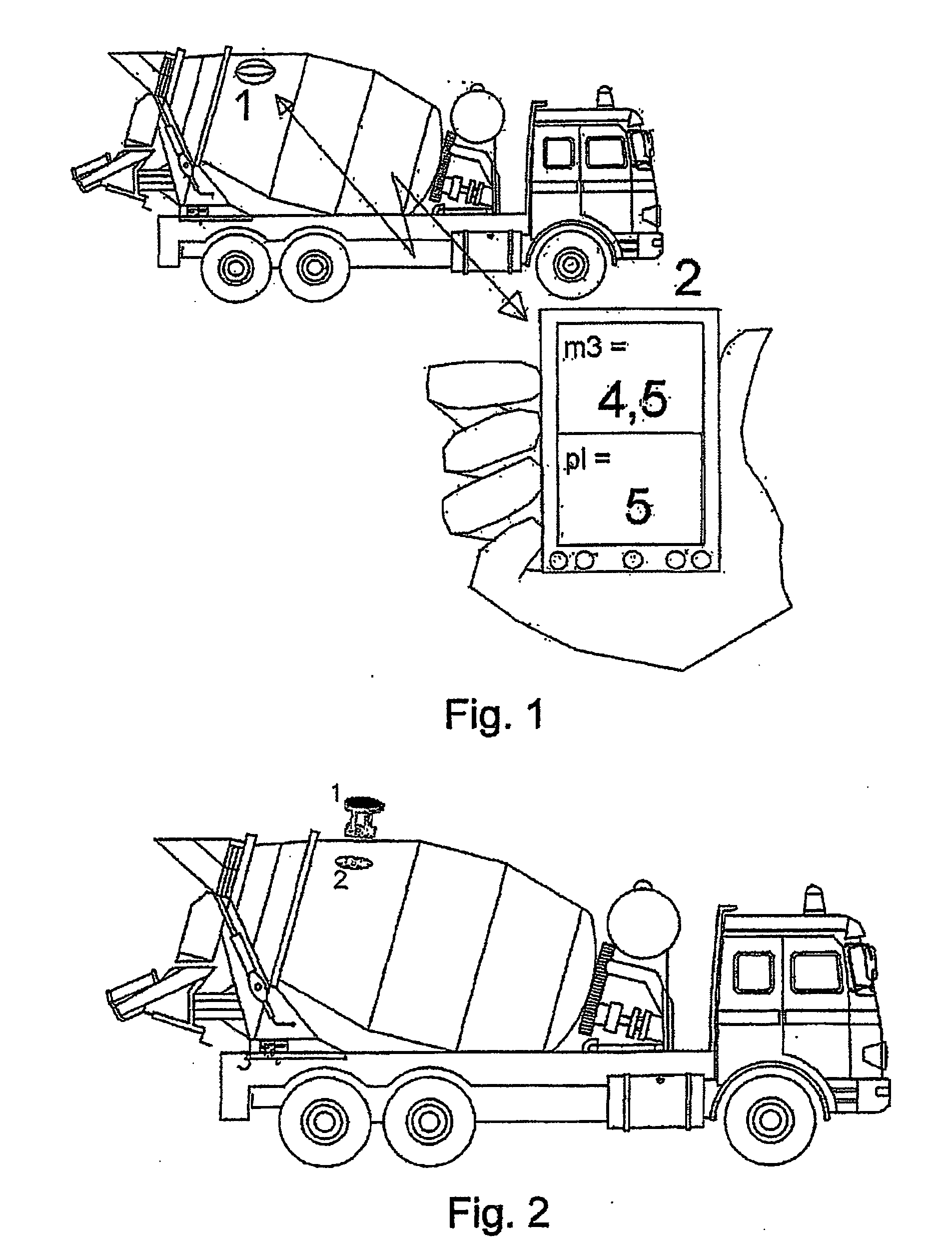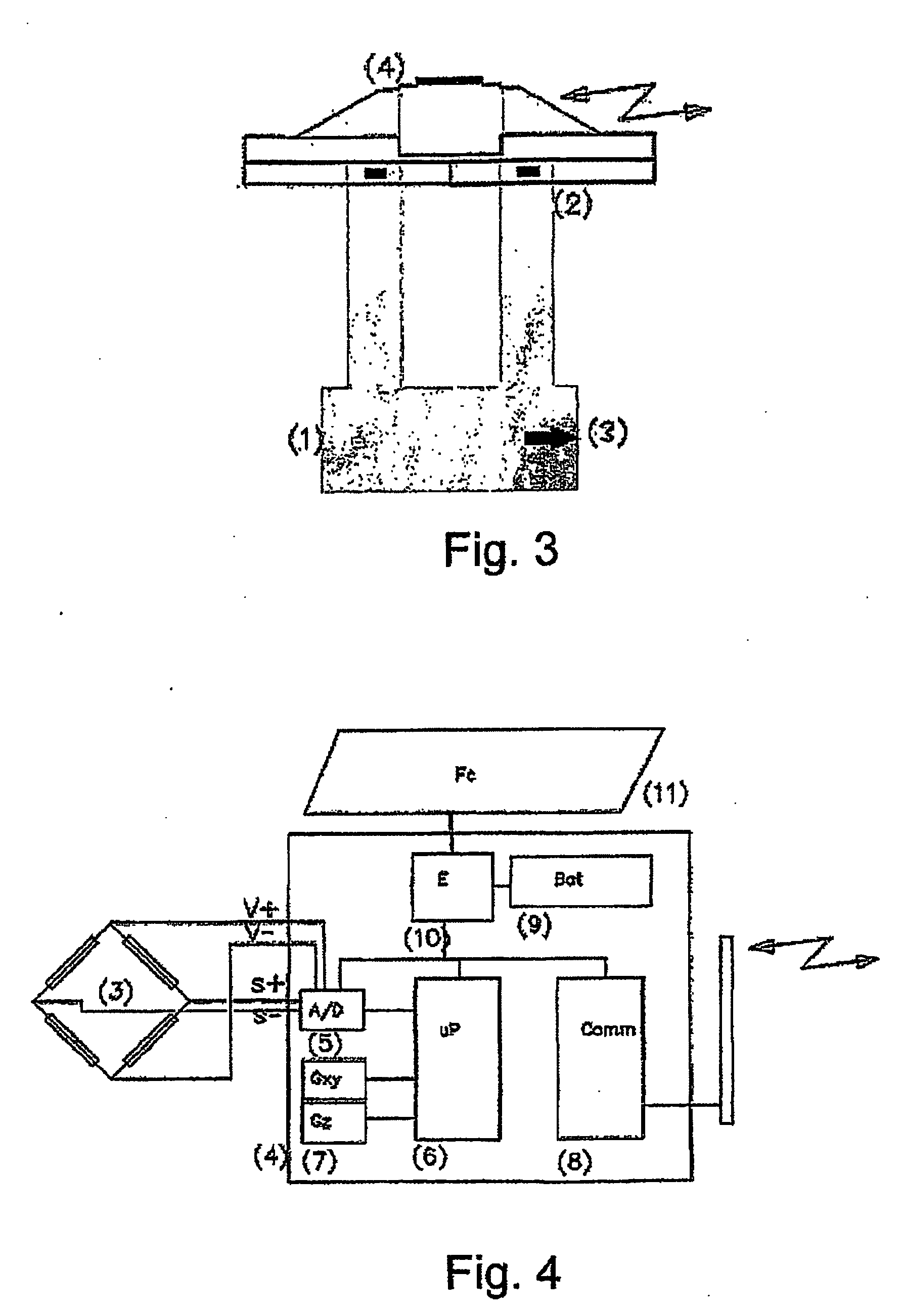Automatic System for Monitoring the Mixing of Conglomerates
a technology of automatic system and conglomerate, applied in the direction of acceleration measurement, level indicators, control apparatus, etc., can solve the problems of system reliability, lack of means, and inability to be autonomous
- Summary
- Abstract
- Description
- Claims
- Application Information
AI Technical Summary
Benefits of technology
Problems solved by technology
Method used
Image
Examples
Embodiment Construction
[0019]The invention presented here is based on an electronic sensor which is installed integrally with the mixer so that it rotates together therewith, as shown at (1) in FIG. 1. The sensor has a microprocessor which detects, processes and records information from the mixer and transmits it via radio or other equivalent wireless series transmission means to other devices with which it communicates, such as, for example, a mobile handset terminal which a user may have, as shown at (2) in FIG. 1. The sensor has internally a battery supplying electric power which allows it to be autonomous for long periods of time. The invention also considers the possibility of providing the sensor optionally, on the outside thereof, with photovoltaic cells supplying it with electrical energy from the sunlight, thus making it unnecessary to replace the battery since it is recharged when the lorry is in use during the daytime.
[0020]The sensor has a blade (1), as shown in FIG. 3, which is made of metall...
PUM
| Property | Measurement | Unit |
|---|---|---|
| plasticity | aaaaa | aaaaa |
| speed | aaaaa | aaaaa |
| force | aaaaa | aaaaa |
Abstract
Description
Claims
Application Information
 Login to View More
Login to View More - R&D
- Intellectual Property
- Life Sciences
- Materials
- Tech Scout
- Unparalleled Data Quality
- Higher Quality Content
- 60% Fewer Hallucinations
Browse by: Latest US Patents, China's latest patents, Technical Efficacy Thesaurus, Application Domain, Technology Topic, Popular Technical Reports.
© 2025 PatSnap. All rights reserved.Legal|Privacy policy|Modern Slavery Act Transparency Statement|Sitemap|About US| Contact US: help@patsnap.com



